On March 2014, both Frank Lampard and Mikel Arteta were on the teamsheets when Chelsea thrashed Arsenal six goals to nothing in Arsène Wenger’s 1000th game for Arsenal. This midweek in the Premier League, both men met once again in the dramatic London derby at the Stamford Bridge – now as managers for their respective clubs.
It was not only Lampard and Arteta but David Luiz as well who had made a return to his old ground after moving to Arsenal earlier this season. However, the homecoming only lasted for 26 minutes after the Brazilian went off for a red card – his first in this season’s Premier League. Playing against 10 men for more than an hour, Chelsea were unable to capitalise on the advantage. The main reason was their lack of creativity in their tactics, as well as a costly slip-up later in the game. This tactical analysis will inform you how the match unfolded.
Lineups
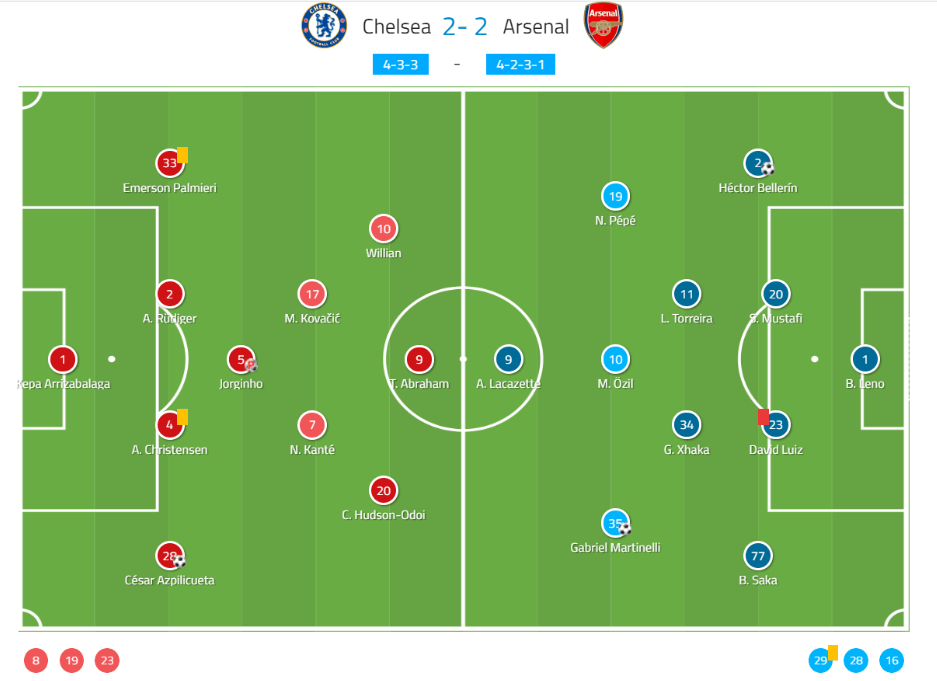
Lampard chose 4–1–2–3/4–3–3 for Chelsea in this game. The duo of Andreas Christensen and Antonio Rüdiger was picked as the centre-back pairing with Jorginho playing as a single pivot in front of them. Tammy Abraham spearheaded the attack with Callum Hudson-Odoi and Willian in the flanks. The dugout was filled with names like Ross Barkley, Mason Mount, and Michy Batshuayi.
In the opposite side, Arteta opted his usual 4–2–3–1 for Arsenal. Héctor Bellerín made his return to the starting lineup and started with Bukayo Saka as the Gunners’ full-back duo. Mesut Özil started at his favourite position with new recruit Nicolas Pépé, and youngster Gabriel Martinelli supporting him in wide areas. Mattéo Guendouzi, Rob Holding, and Joe Willock had to start the match from the bench.
Arsenal used man-oriented defending to nullify Chelsea building from the back
The Gunners had interesting defensive tactics to prevent Chelsea from building their attacks smoothly from the back. Shape-wise, they kept their 4–2–3–1 shape but with slight adjustments. Both Pépé and Martinelli were tasked to play a bit narrow to direct Chelsea to build through their full-backs.
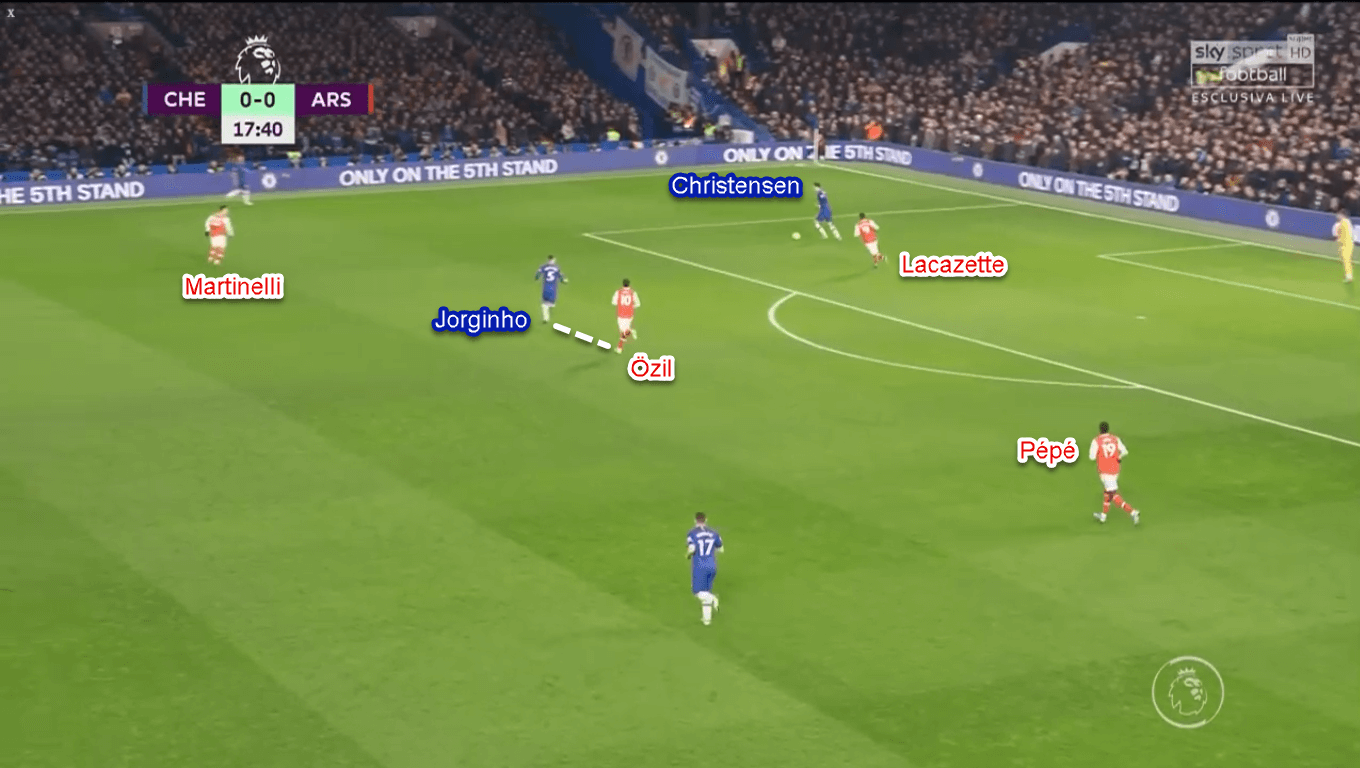
In front of them, Lacazette was actively pressing the on-ball centre-back while closing the ball-far centre-back with his cover shadow. Behind Lacazette, Özil was instructed by Arteta to man-mark Jorginho. The defensive tactics were used to force Chelsea to construct their attacks from wide areas, and even further, to make them play ineffective long balls up front.
Not only that, but Arsenal’s double-pivots were also tasked to mark Chelsea’s advanced midfielders, even though only to a certain extent. It meant that if N’Golo Kanté or Mateo Kovačić dropped next to Jorginho, either Lucas Torreira or Granit Xhaka would not follow their respective opponent tightly. This was the loophole that got exploited by Lampard’s men. Sometimes Kovačić would drop alongside the Italian to help his team in progressing the ball swiftly without any aggressive defending from Torreira.
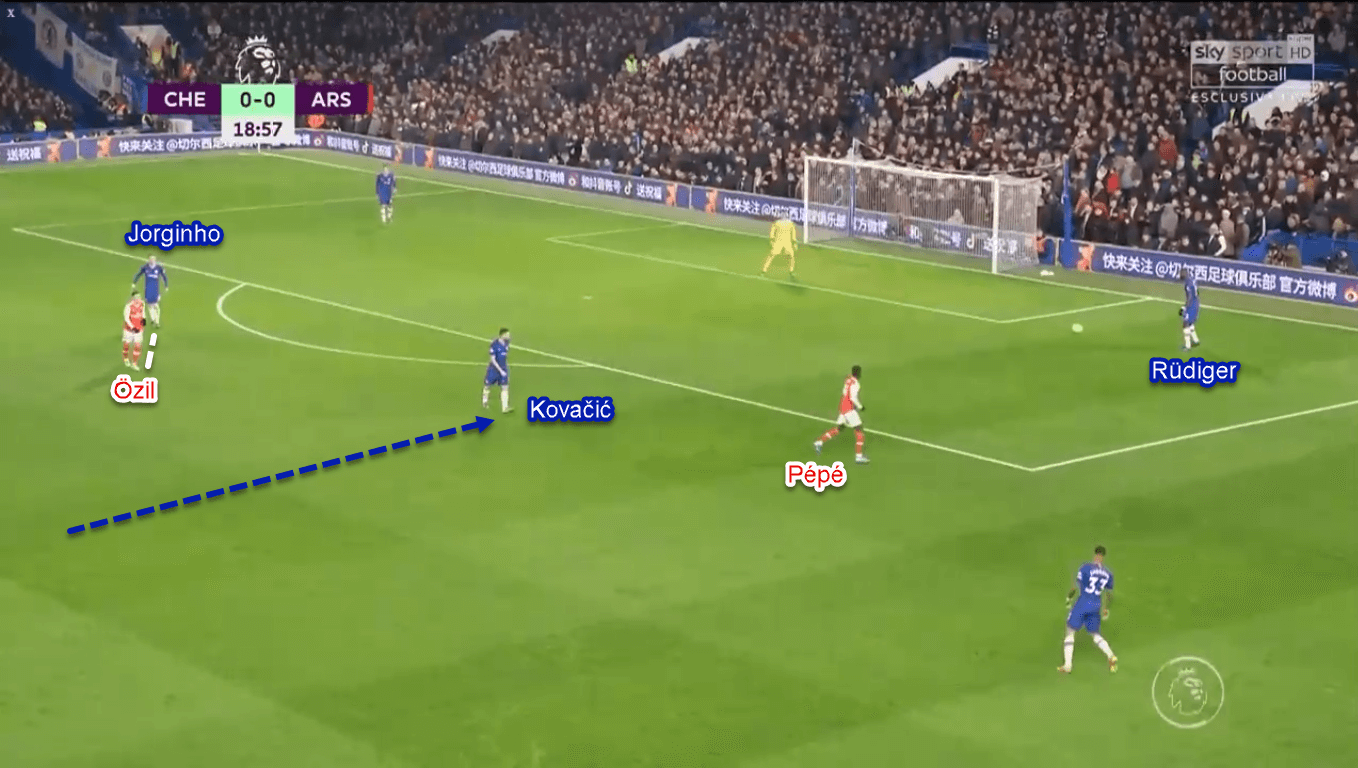
Rather similar defensive approach from the Blues
Interestingly, Chelsea used a rather similar set-up, however, Chelsea deployed their man-oriented defending a bit differently from the Gunners. The home side mainly focused to apply their man-oriented defending in midfield, which we’re going to see deeper in this part of the analysis.
In Chelsea’s defensive tactics, the main focus was to press Arsenal heavily in their ball-side area while abandoning the ball-far defender. Abraham was tasked to close down the on-ball defender while closing the partner with his cover shadow. Behind him, the midfielders were tasked to do man-oriented defending.
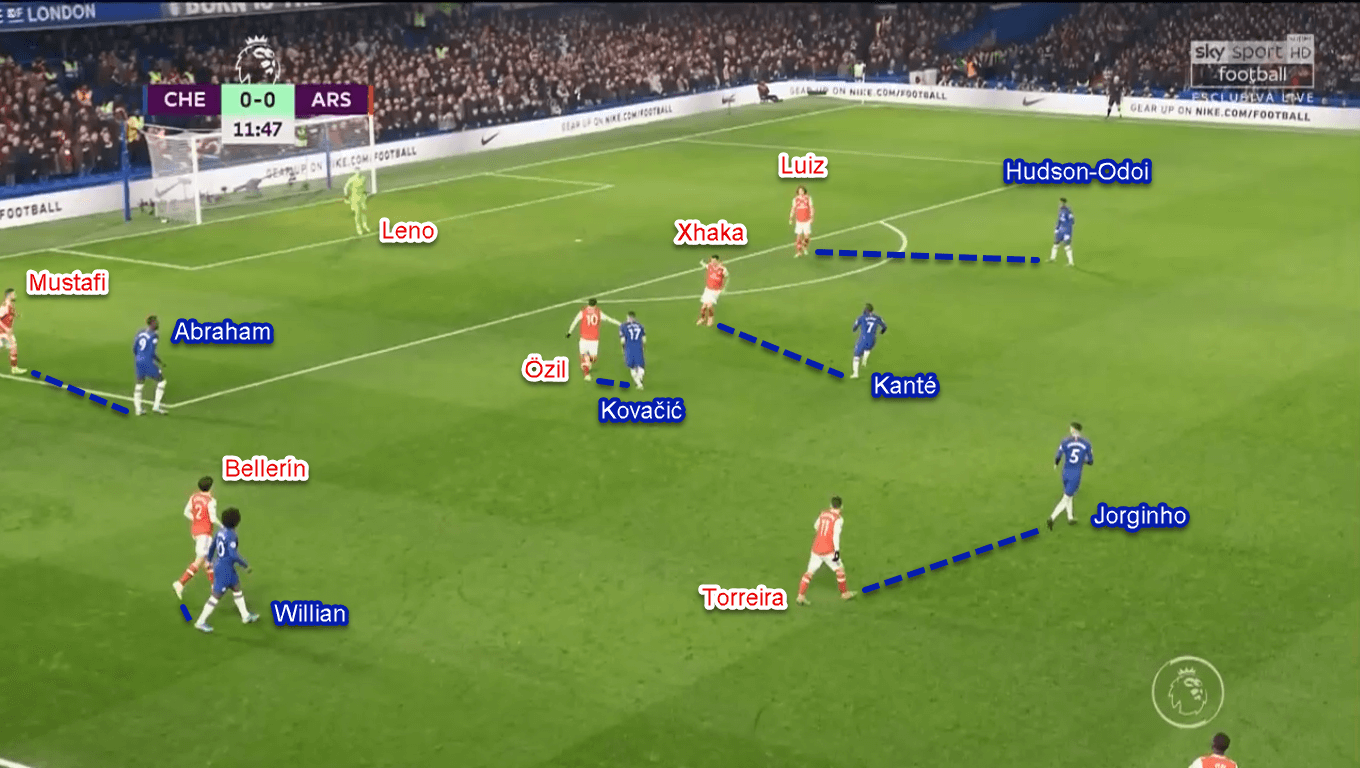
The trio of Kanté, Jorginho, and Kovačić would happily leave their respective areas to follow the likes of Xhaka, Torreira, and Özil, therefore closing down whoever was closer to them. This approach was used to prevent Arsenal’s midfielders to receive the ball facing Chelsea’s goal and force them to retreat the ball, thus restarting the attack. On top of that, with this approach, the Blues dictated Arsenal to use long passes to reach their forwards.
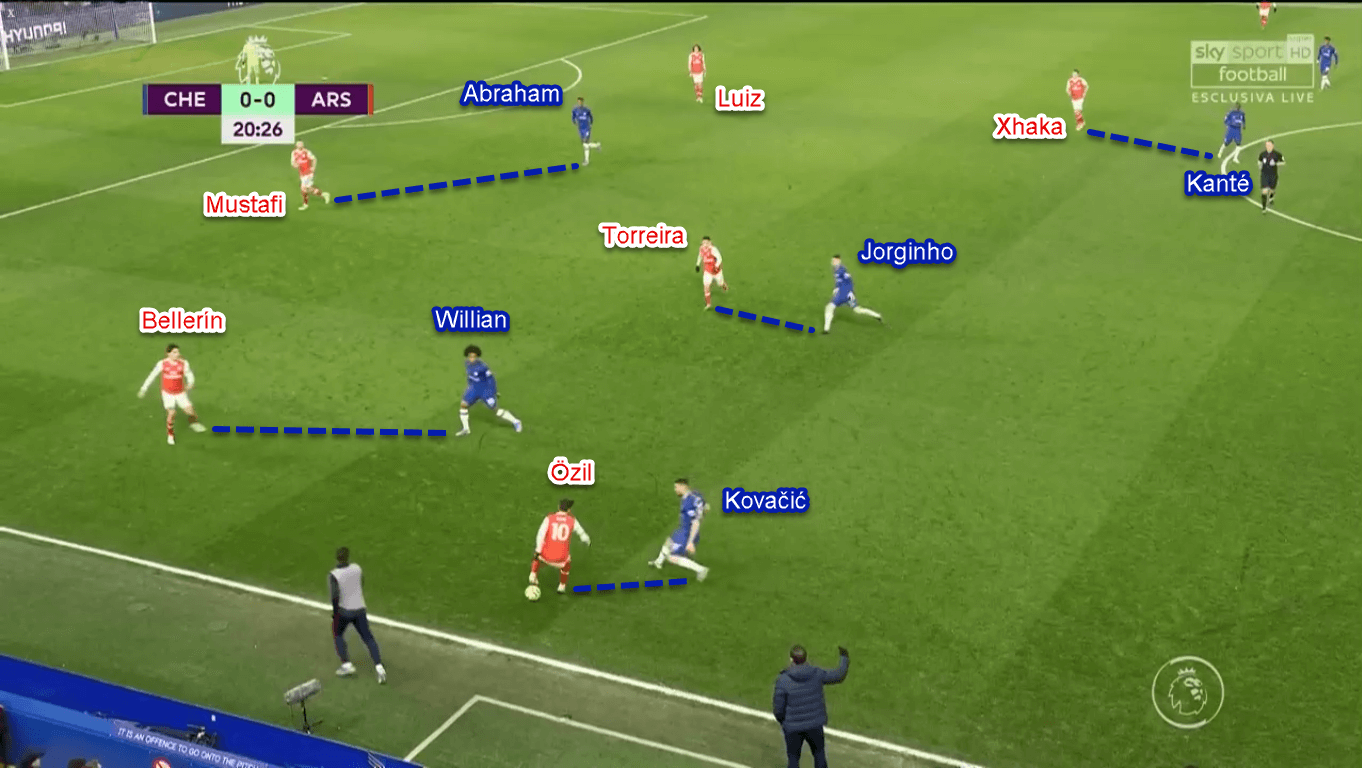
Arsenal’s answer to Chelsea’s way of defending
Nevertheless, the man-oriented defending was not perfect either, with Arsenal finding two ways to try to escape it. First, by allowing Özil to drift wide alongside the midfielders, giving their centre-backs more options to progress the ball. By doing so, the centre-back would abandon Torreira, Xhaka, and the ball-side full-back to reach Özil quickly. After that, the German would be able to combine with Pépé in the right flank before trying to reach the final third.
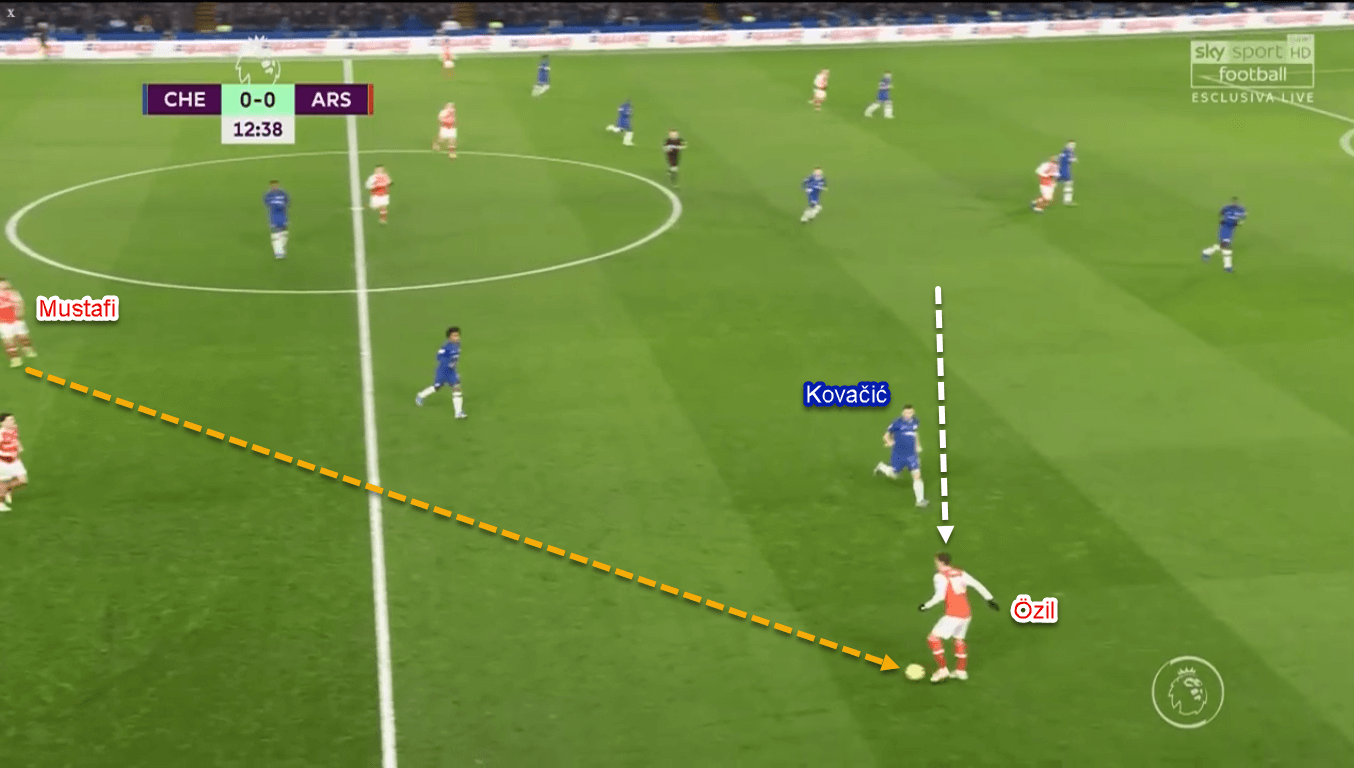
Özil’s movement would often confuse Chelsea’s midfield, especially if Jorginho was the closest midfielder to the German. This triggered the second chain of Arsenal’s alternate build-up.
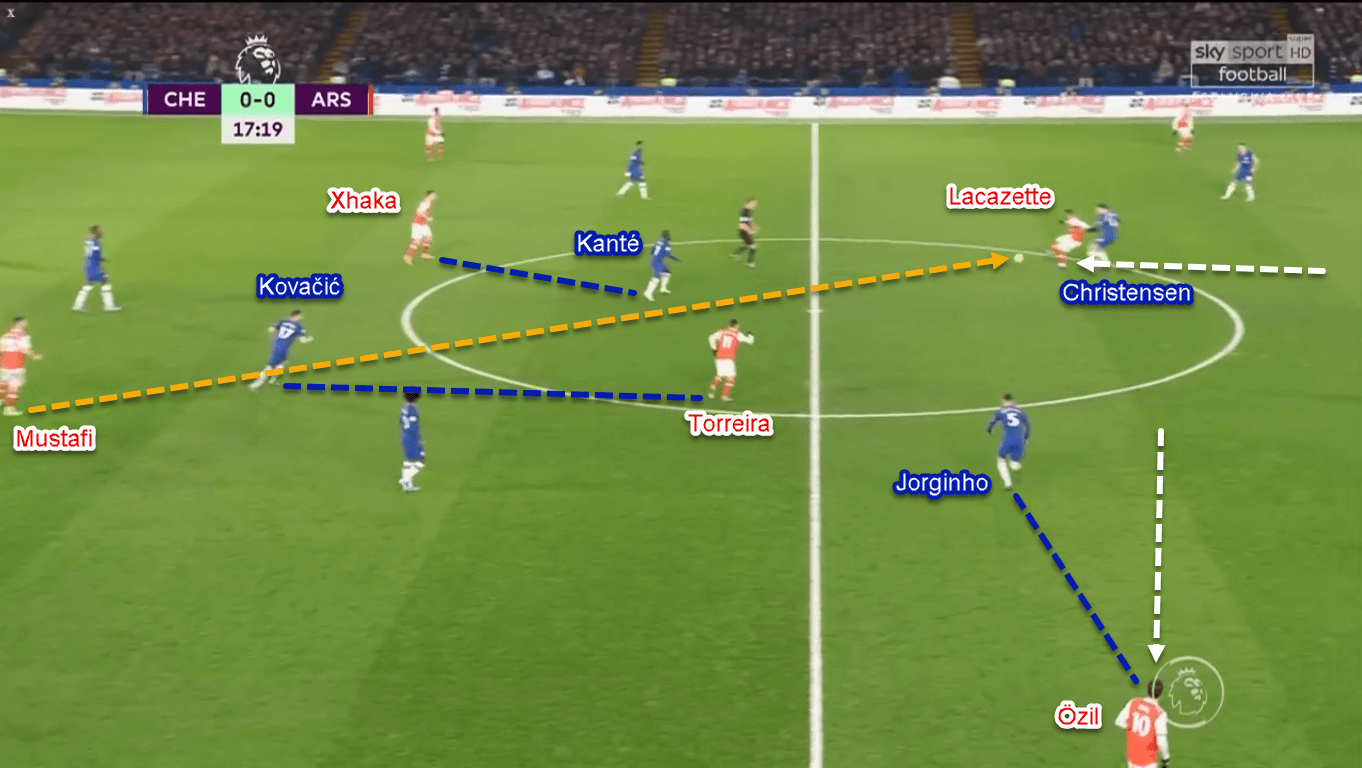
Second, it was by allowing Lacazette to drop a bit into the left half-space. If Özil pulled Jorginho with him, space would be opened in between Chelsea’s lines. This space then would be filled with dropping Lacazette. To continue the attack, Arsenal’s on-ball centre-back could find dropping the striker with a forward pass. However, this approach was not so effective because he was always followed closely by Christensen, therefore limiting his threat massively.
Chelsea’s wing plays (part one)
In this part of the analysis, we’re going to see how Chelsea tried to create their chances. Primarily, the Blues get the ball to their flanks before sending a cross into the box to make their goal-scoring attempts. Lampard’s men would abandon the congested central area and focus almost solely through the wide areas.
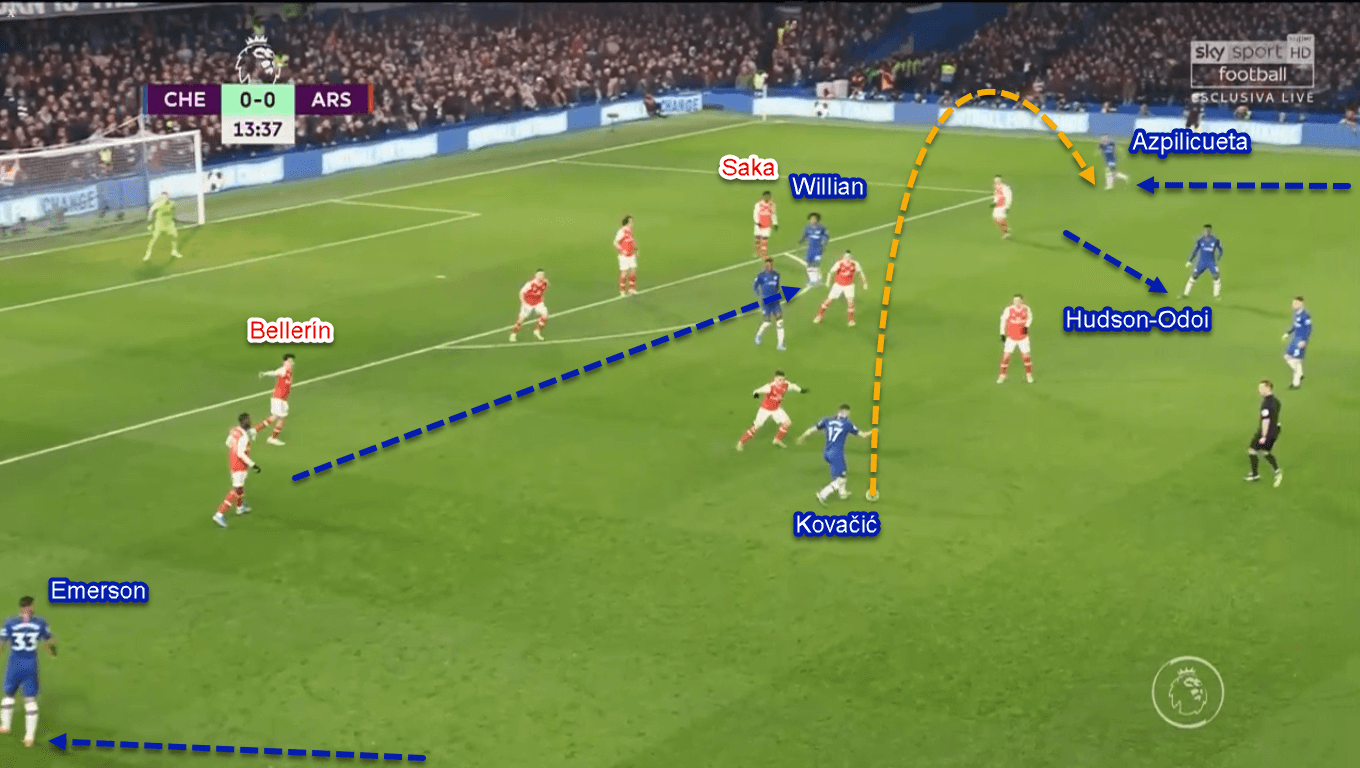
To access the flanks, mainly Lampard instructed his wingers to tuck inside alongside Abraham. Their inside movements then would allow the full-backs to go high and provide width in Arsenal’s defensive area. The full-backs then could be accessed with two options: either via a diagonal pass from deeper areas or directly from the ball-side centre-back.
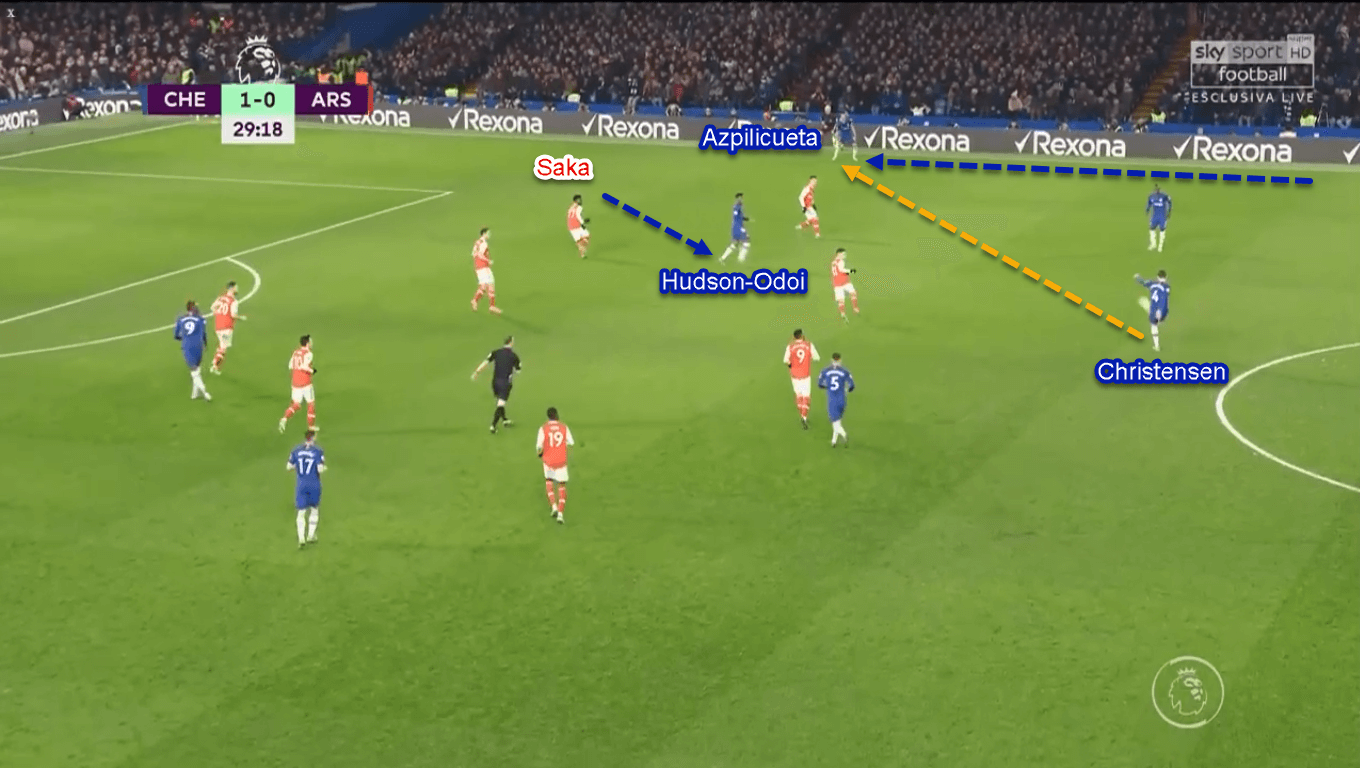
Lampard also varied his approach to utilising the flanks. He also allowed his full-backs to play inside the half-space and send the wingers wide at times. Another variation was to send the ball-side midfielder to join his teammates in the flank, allowing Chelsea to overload that area.
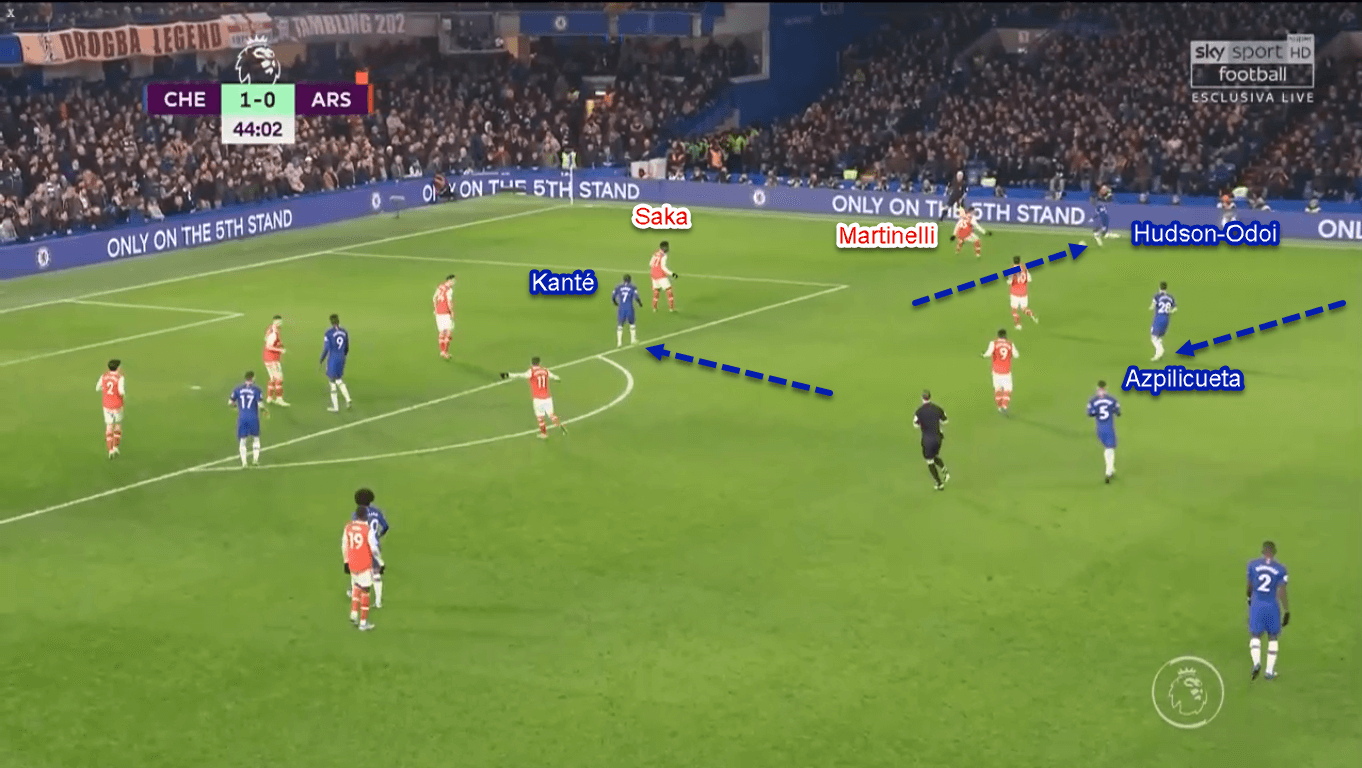
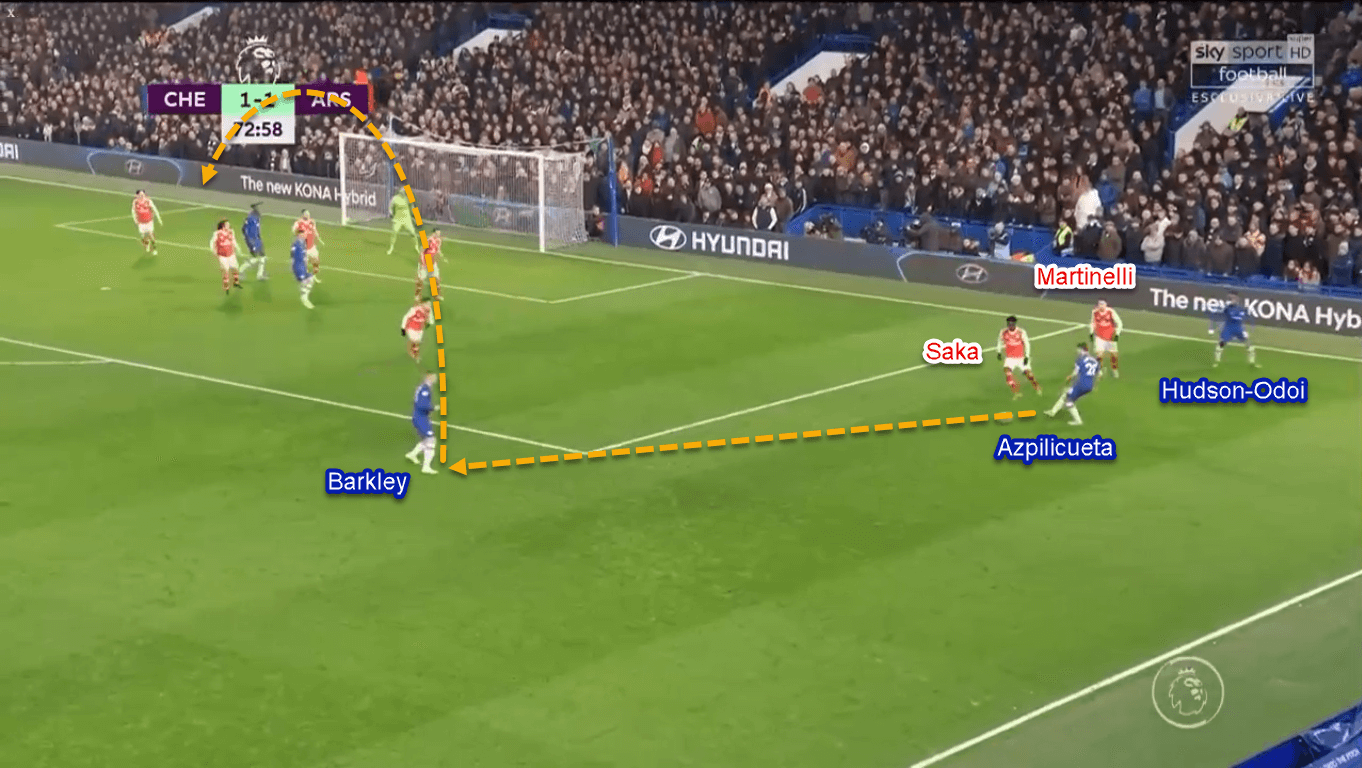
On top of that, Lampard gave freedom for his offensive players to interchange positions between them. By doing so, they could be more unpredictable for Arsenal’s defence. Combined with the overload, this approach was targeted to free one player in space to make a cross into the box.
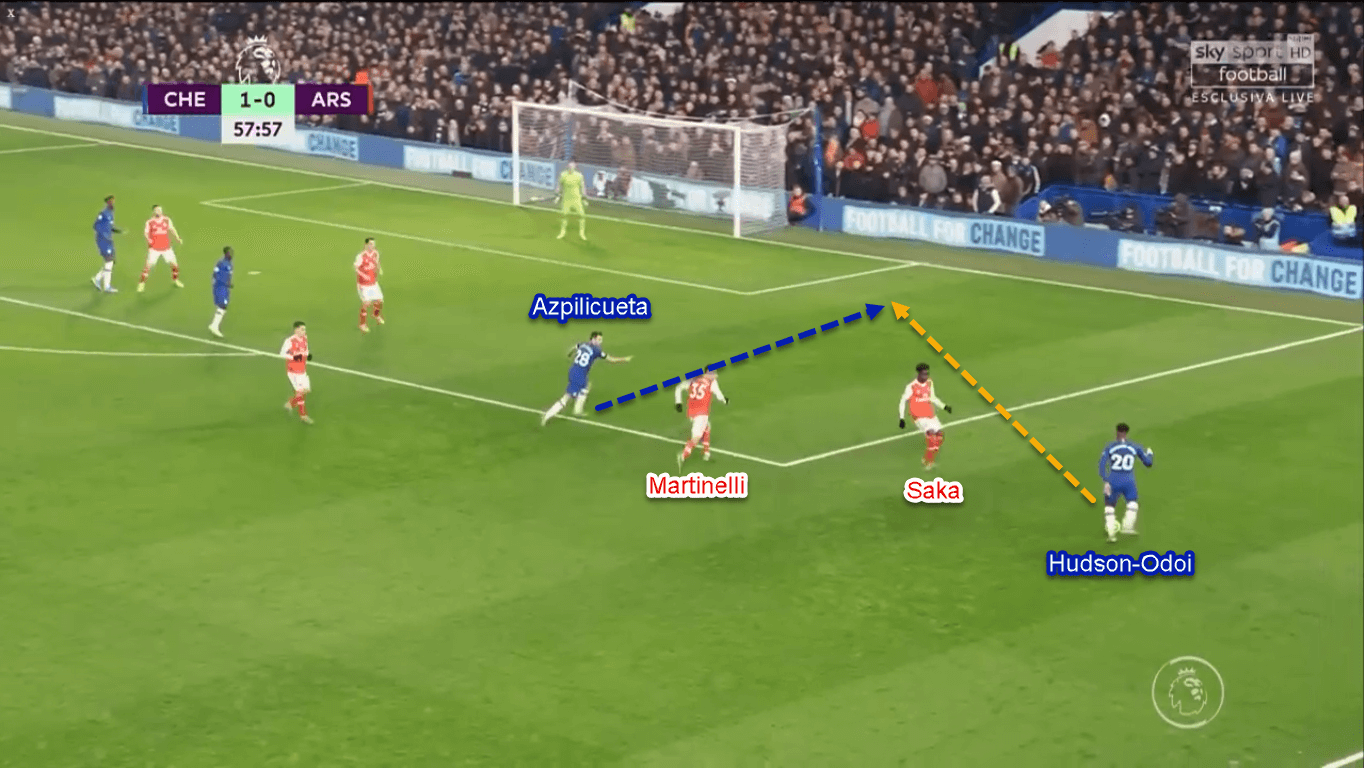
Chelsea’s wing plays (part two)
Looking at the stats, Chelsea managed to make 17 corner-kick – a dozen more than Arsenal got. In this particular type of set-piece, Chelsea often utilised short corner-kicks rather than longer ones.
In their short routines, Chelsea would almost automatically create an overload in that side, a similar objective in their open-plays from the flanks. With left-footed Emerson as well as right-footed Willian and Hudson-Odoi (later Mount) combining in the short routines, Chelsea added more unpredictability to attack Arsenal from this approach. The reason was they were able either send in-swing or out-swing crosses or even grounded balls without being anticipated.
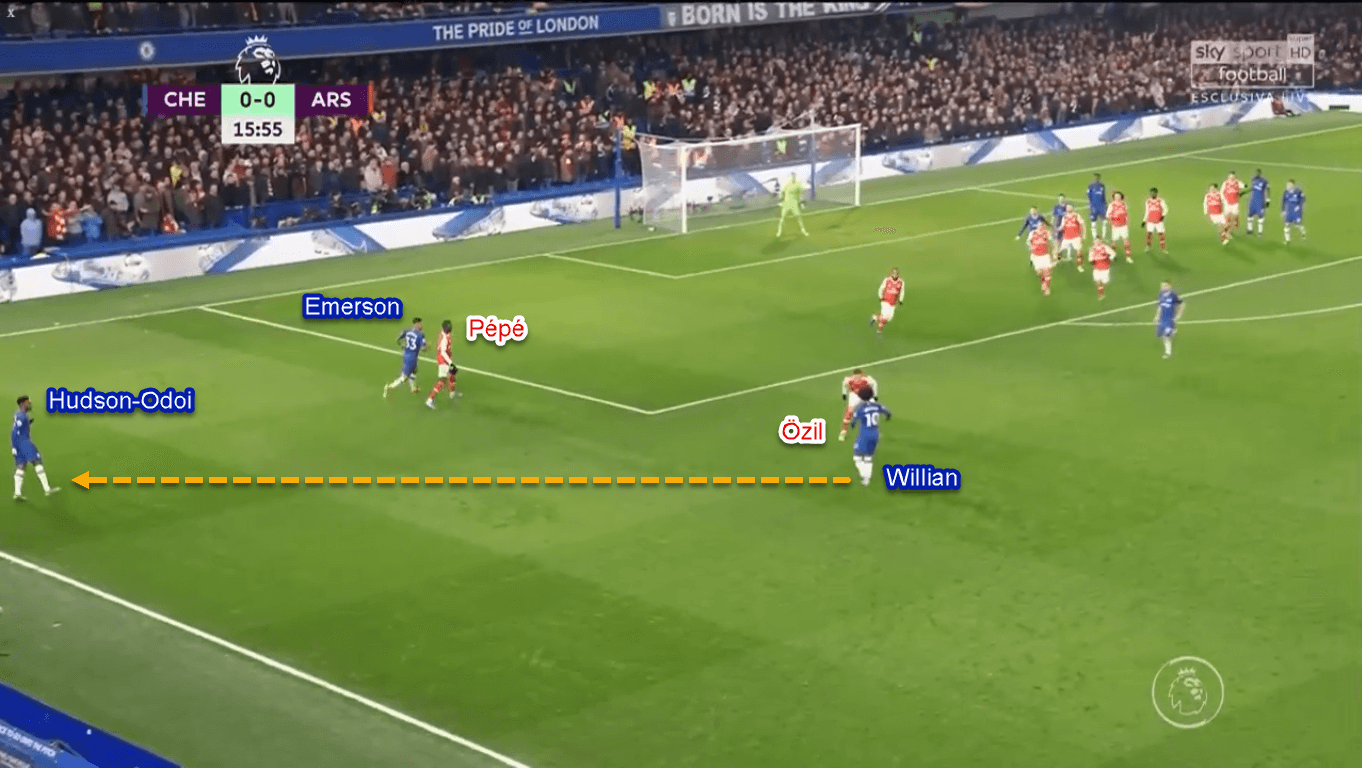
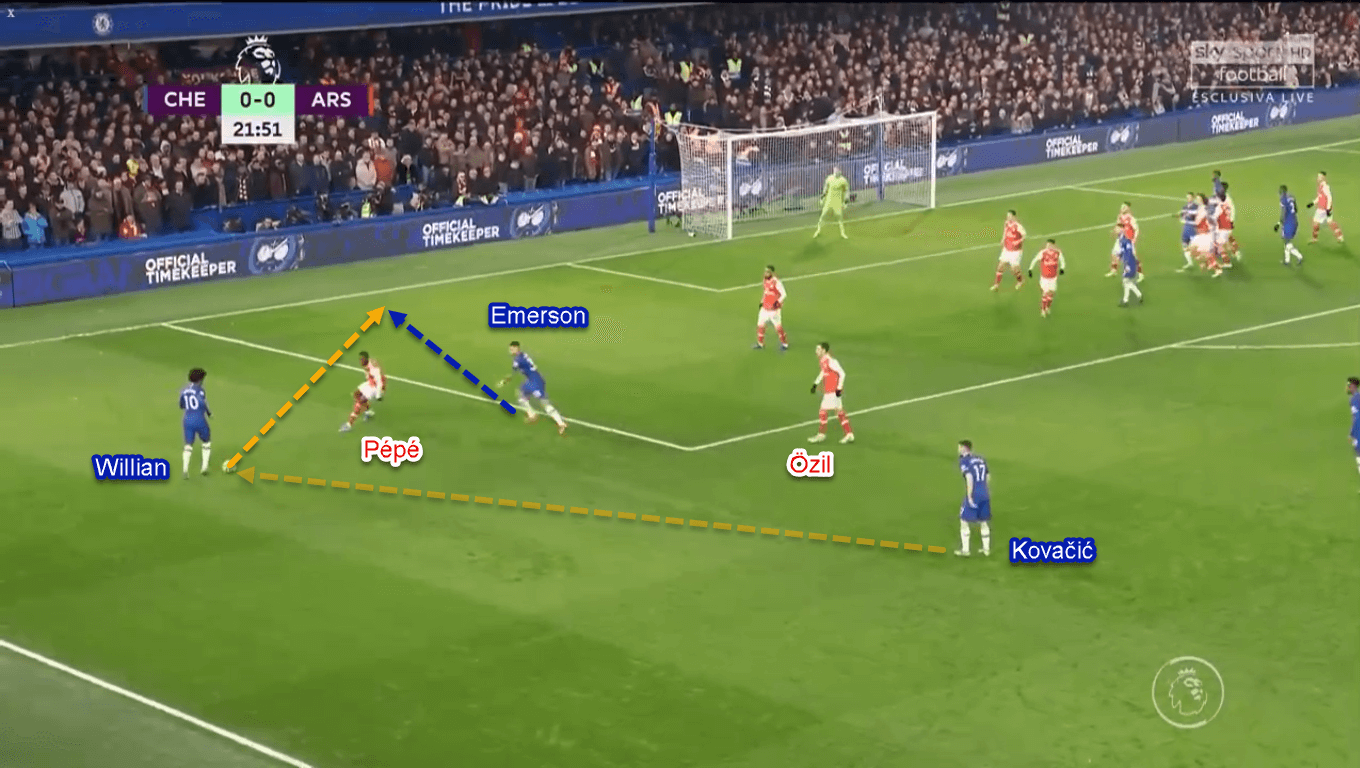
On top of that, by using short corner-kicks mainly, Chelsea would also be able to create a space in between Arsenal’s goal and the makeshift defensive line. This would provoke two things: first, allow Chelsea to free a player in behind before sending a cross. Second, to provoke Arsenal making a defensive miscommunication, thus allowing Chelsea to punish the failed offside trap attempt. Azpilicueta’s goal proved these points.
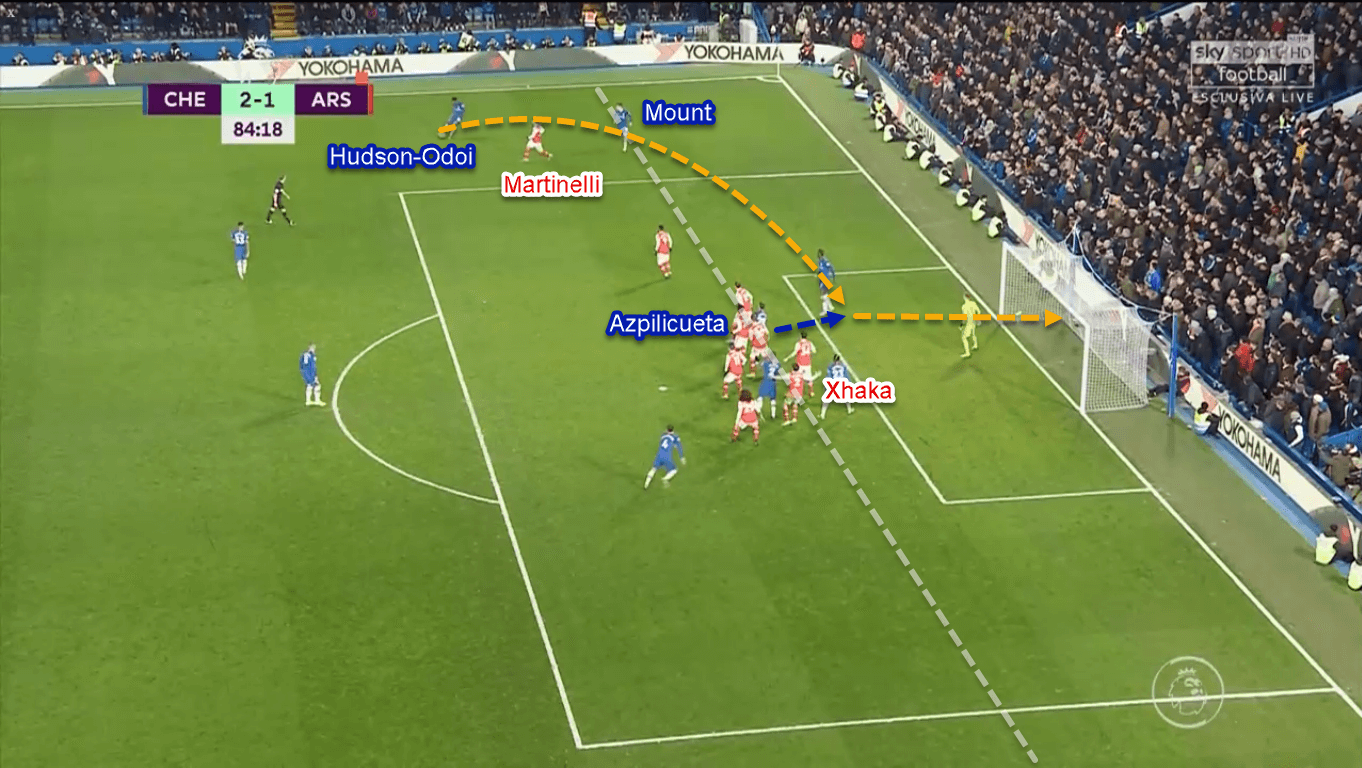
As per the statistics, Chelsea’s flank-heavy approach had resulted in 31 crosses. However, their somewhat poor deliveries made the success rate in this part of statistic only stand at 11 crosses (35%).
Luiz’s expulsion changed Arteta’s initial plans
Initially, Arteta wanted his players to defend aggressively, therefore forcing Chelsea to be less effective. However, Mustafi’s comical error made Luiz commit an expulsion-worthy foul on Abraham. The red card demanded Arteta to make changes in his tactics for the last 65 minutes.
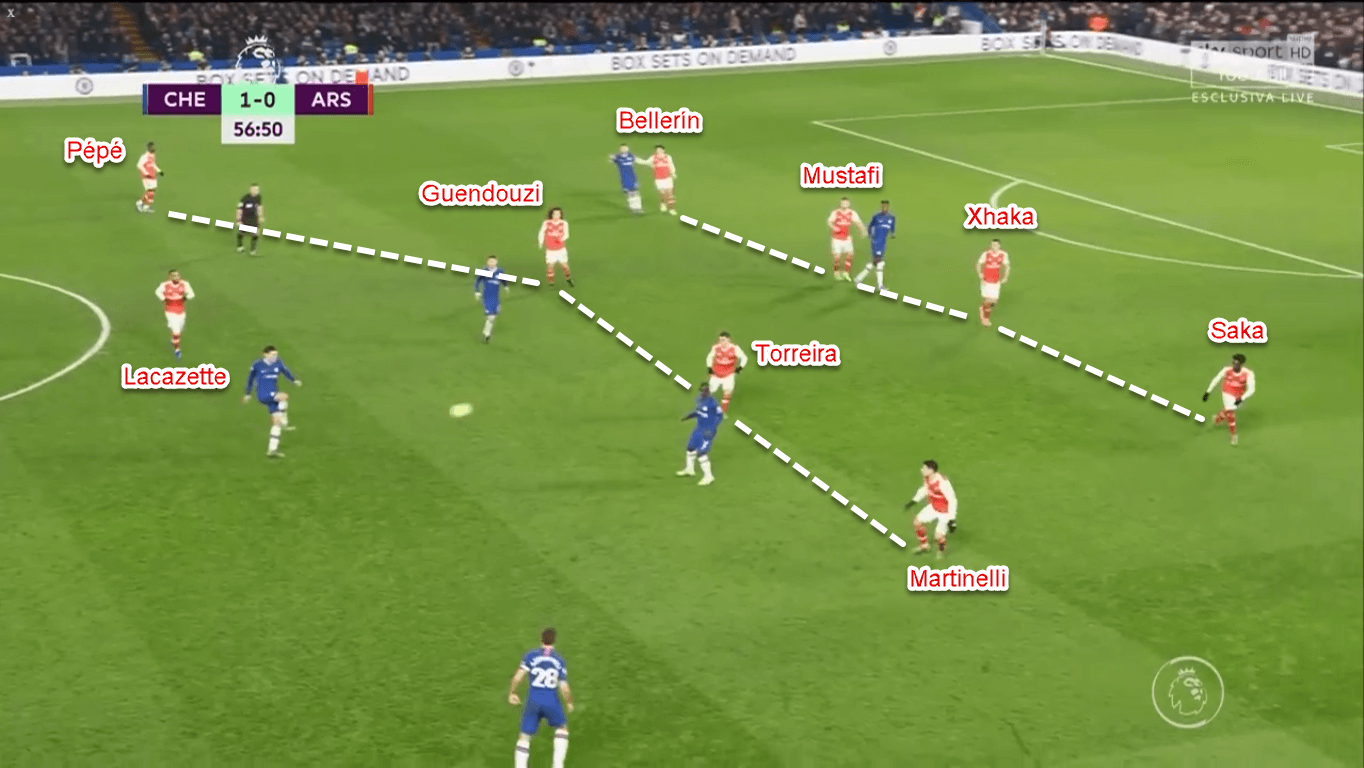
Shape-wise, Arsenal went to use 4–4–1 for most of the remaining minutes. In their 4–4–1, Arsenal sat deep and allowed no space in between the lines. They did use 4–2–3 in their mid-block pressing but only for limited minutes in the second half.
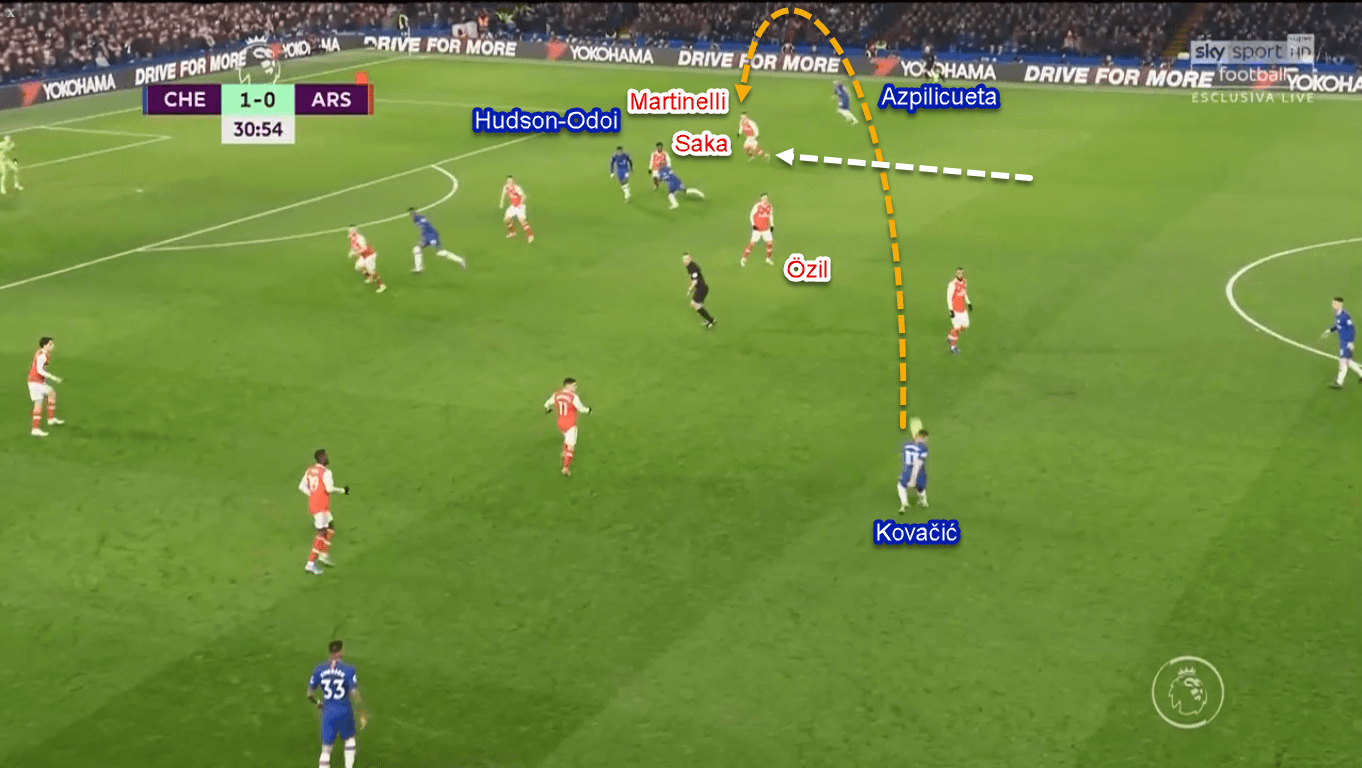
Tactic-wise, Arteta tasked the wingers to be more active defensively. Both Pépé and Martinelli were instructed to drop deep, sometimes alongside the backline. Their dropping movements would allow the full-backs to stay in the defensive line, rather than coming out closing Chelsea’s attacker in the flanks.
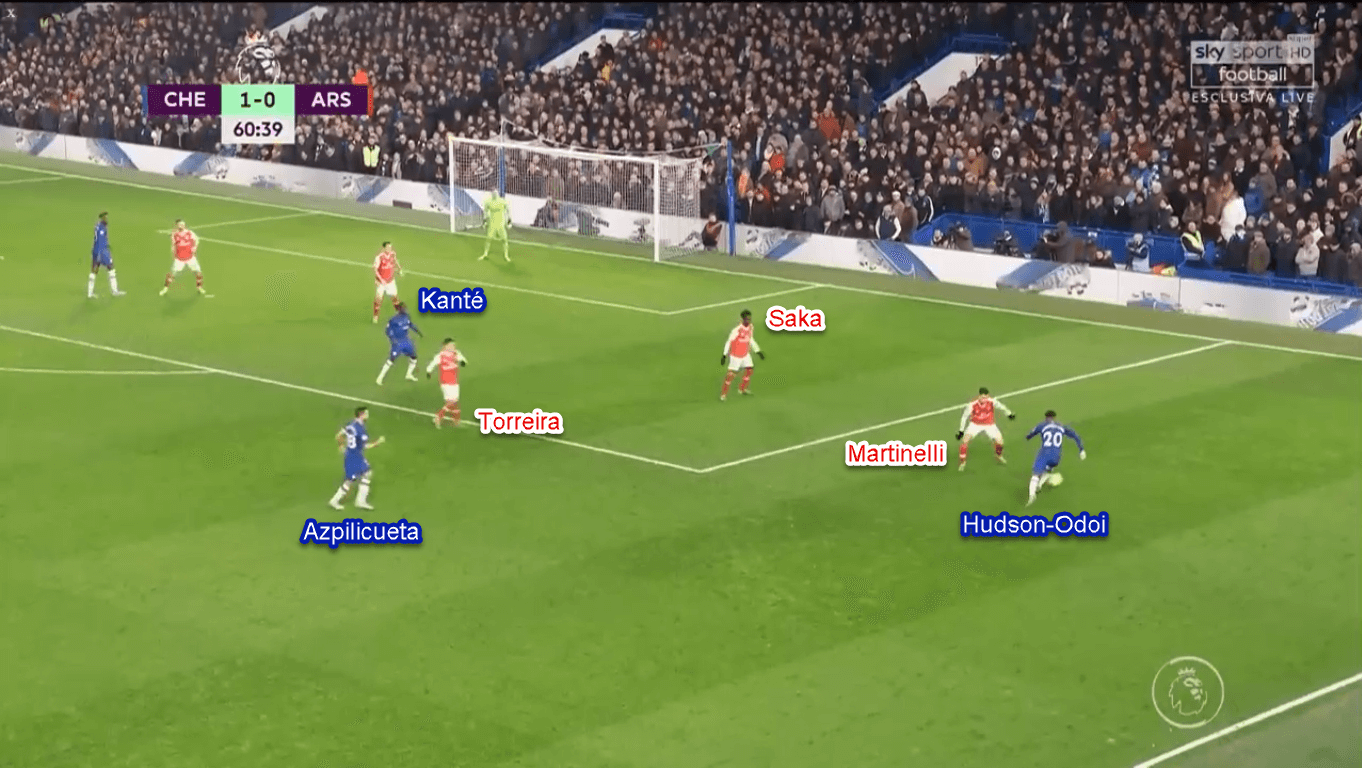
Arsenal were also able to nullify Chelsea’s wing plays at times by sending the ball-side midfielder to help. This would limit Chelsea’s chances to create an overload and force them to retreat. On top of that, Lacazette would also drop a bit to ensure the Blues can’t switch their play quickly.
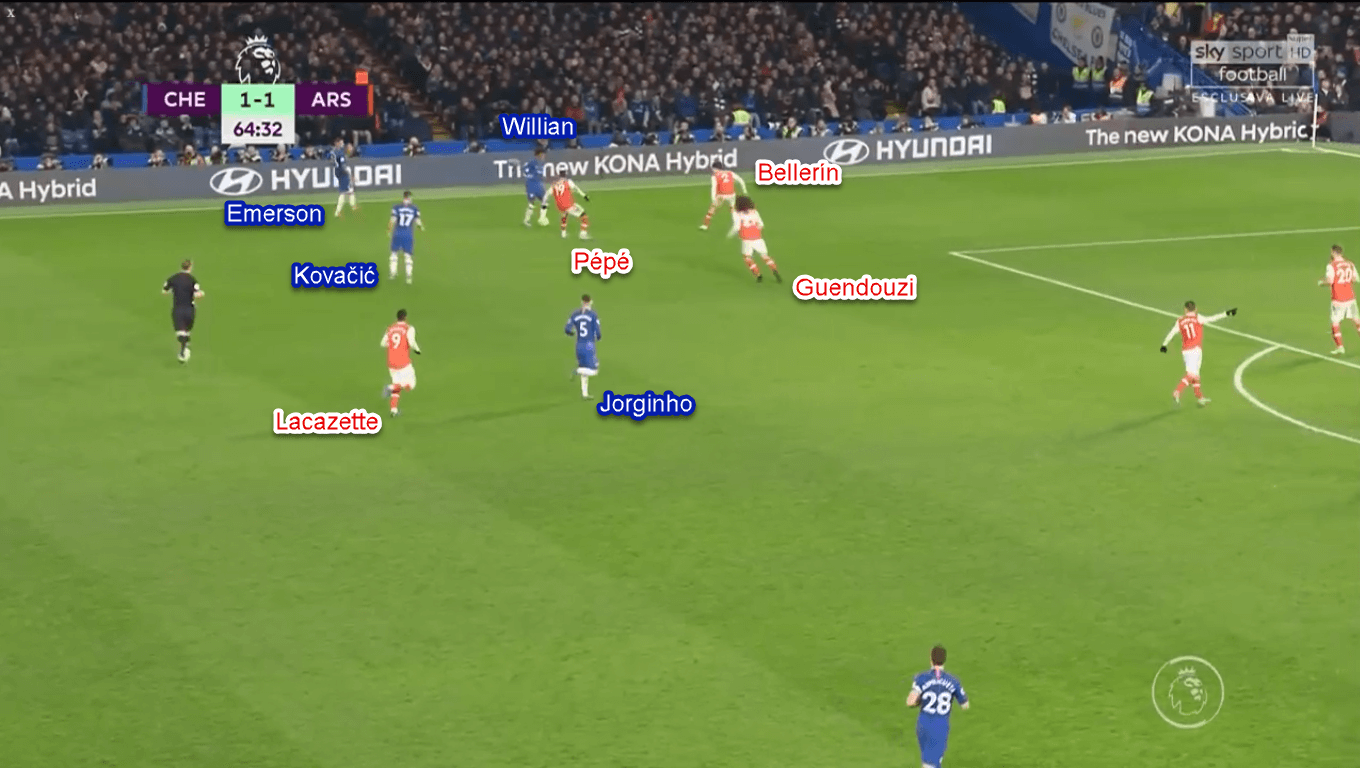
In the last minutes, Arsenal moved to a 5–3–1. Having three players in the heart of the defence granted Arsenal’s wing-backs to roam forward more freely. This approach was proven effective as right wing-back Bellerín scored Arsenal’s equalising goal in the dying seconds. Questions must be asked of Chelsea’s midfield line as they allowed heavily-limping forward Abraham to defend marauding Bellerín, instead of the fresher Mount or Jorginho.
Conclusion
To be honest, Arsenal were lucky in this match. With only a total of 0.24 xG in the stats, they managed to score two goals from their only two shots. Kanté’s slip and Chelsea’s lack of midfield coordination late in the game were the main culprits of this dramatic result. However, Lampard’s men’ lack of crossing quality in this game should also take the blame, as such a performance put the flank-focused approach out of the window.
Oppositely, credit must go to Arteta and his tactics. Rather than keeping the aggressive approach, he willingly shifted to a safer defensive set-up. Not only that, brilliant displays from individuals like Bellerín as well as Martinelli helped Arteta and Arsenal salvage a precious point away from home. Hopefully, this result will give a morale boost to Arsenal, who are now sitting relatively uncomfortable at the 10th spot of the Premier League.





Comments